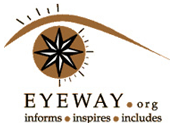Microsoft Corp. and a consortium that promotes open standards for “digital talking books” are set to release to the open source community specifications that would allow visually impaired people to navigate through multimedia content.
Microsoft and the Daisy (Digital Accessible Information System) Consortium have been collaborating on a free, downloadable plug-in for Microsoft Word that would convert open Extensible Markup Language (openXML)-supported documents into a friendlier format accessible to people with visual, physical, perceptual, cognitive or even learning disability.
“We’re running right on time for the January 25th release of the beta bits that will become available via SourceFourge,” said George Kerscher, secretary general of the Daisy Consortium, in a briefing held here.
Microsoft and the consortium will release on January 25 to SourceFourge the openXML Daisy XML converter, which is a plug-in that will allow people to easily “save as” Microsoft Word documents into Daisy XML, according to Kerscher. The Daisy XML can then be processed and turned into Daisy digital talking books.
Established in 1996, the Daisy consortium is now working on standards to make “reading” multimedia content easier for the blind and those who have so-called “print disabilities.” The consortium is promoting the Daisy standard for digital talking books that aims to make easier the reading experience for people who are blind and have reading disabilities.
The consortium also envisions a future that more published information would become accessible to them. In its website, the Daisy consortium said that all published information will soon become available to people “at no greater cost, in an accessible, feature-rich, navigable format.”
The first Daisy standard started in Sweden in 1994.
“It was originally developed to solve the problems that the libraries in the world had about what they’re going to do when analog cassettes go away. Everybody knew that they had to transition to digital. There were no standards for talking books that were digital,” said Kerscher.
From recorded audio books to CDs, Daisy has allowed content publishers to create books and published materials that non-sighted readers could readily navigate through using open standard markup language used on the Internet.
“The next phase is for the end-users to be able to search and spell words. It started to move beyond the blind population to people who had low vision, dyslexia and other learning disabilities,” Kerscher said.
Daisy is now a standard that has been adopted in countries like Sweden, Japan, the United Kingdom and the United States.
Kerscher said the consortium represents about 35 countries worldwide.
Despite these advances in digital recording, only about 5 percent of published materials are available to the population of non-sighted readers, Kerscher said.
The collaboration between the Daisy consortium and Microsoft hopes to allow more content publishers to easily create more so-called Daisy books.
“Before, it took months to convert printed documents and books into Daisy books. Now, it takes a few minutes,” he said, adding that the collaboration also intends to find its way into cheaper digital audio devices for the non-sighted readers.
Reed Shaffner, product manager at Microsoft Corp., added that Daisy has allowed content publishers to sync text with digital audio.

Facebook comments